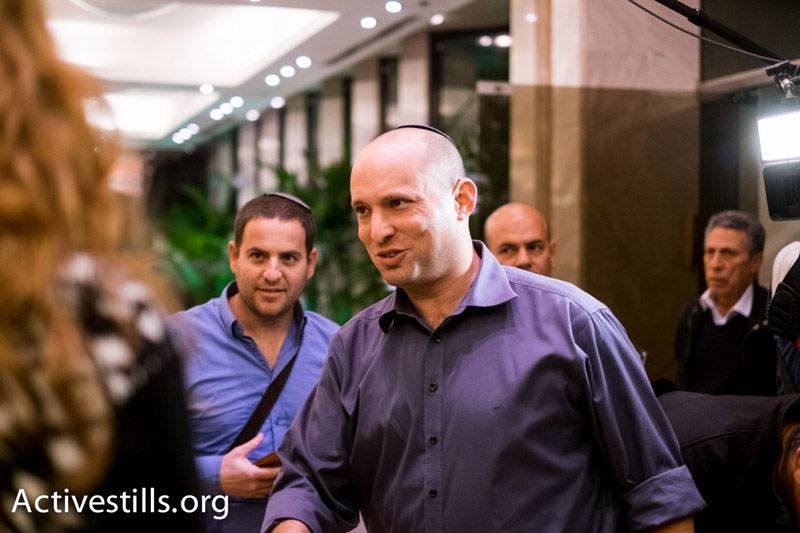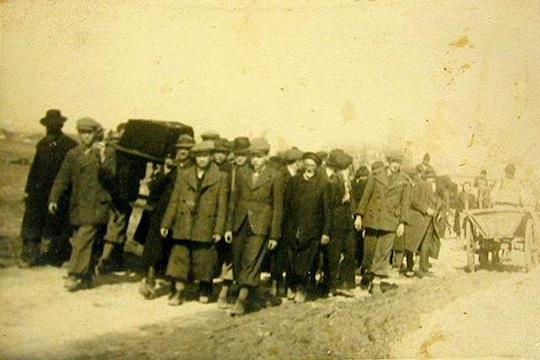A new committee is tasked with exposing Israeli students to Mizrahi and Sephardic Jewish history. The problem? There is more than one narrative.
By Gil Gertel
A committee in Israel’s Education Ministry meant to “expose Israeli students to the cultural, philosophical, social, and historical wealth of Jewish communities of the East and Spain” began its work last week. The Bitton Committee, appointed by Education Minister Naftali Bennett, is headed by poet and Israel Prize winner Erez Bitton. It is supposed to find ways for integrating content on this topic in the existing school curriculum. So far the plan sounds great.
The education minister is very proud of his work. “I am proud to fix an historical injustice,” and, “the revolution has begun,” were just two tidbits of praise he lavished on himself last week on social media.
Bennett could not seem to wait for the Bitton Committee to finish its work, it seems, as he hurriedly deliniated the path toward redress in a Facebook status published on Sunday: “A short history text: Have you heard about the Kishinev pogroms? About the 1929 Palestine riots? And what about the riots on Oujda and Jerada in Morocco? Forty-one Jews were murdered in these riots.”
Bennett’s Facebook followers were elated: “I am Moroccan on both sides and I had no idea. Thank you Bennett.”
Inclusive storytelling
For a moment one hoped that Bennett was giving real respect to the stories of Moroccan Jews alongside those of Jews from Russia, such that these stories no longer compete with one another.
I myself am a son of refugees/migrant workers who left the Podolia (present day Ukraine) following the Kishinev pogrom, wandered through several countries until they found work in Tel Aviv in the first years of the 20th century. To my understanding, Jews of Oudja and Jerada have their own story. It is an interesting one that I have much empathy for, even though it is not my own.
I feel the same way for the Palestinians of al-Qubab, a destroyed Palestinian village not far from my home — this too is not my story. I truly believe that all these stories can exist side by side, without disturbing or undermining the existence of those who tell them.
Naftali Bennett, however, comes at this story from a completely different angle.
On the walls of the auditorium where the Bitton Committee held its inaugural meeting hung posters reading: “One nation, that’s the entire story,” to which Bennett added: “We will write one entire story for one nation to guide our education.”
Why one story? Because Bennett doesn’t believe in other stories, not of Jews and definitely not of other people. He’s actually quite clear about his worldview: “There is no such thing as two narratives or two truths. There is a single truth.” I hope that the members of the Bitton Committee see things differently. Otherwise we have achieved nothing. Once again all the sides will compete over the truth, and once again there will be one side that forces his story on the others.
Got pogroms? You’re one of us
If Bennett seeks to unite all these stories into one, one must wonder what that single story looks like. The common denominator Bennett proposes can be found in the word “pogroms,” which repeats itself in his status. Kishinev, Hebron, Oujda — it’s all the same story.
Weak, diaspora Jews who were persecuted by their neighbors for their Judaism, and were massacred as the ultimate victims of their beliefs. On this point we are all one nation. Come join the circle, Bennett tells the Mizrahim, because you, too, were once victims.
Yet the interpretation of the victim is a Zionist-Ashekanzi one.
“For God called up the slaughter and the spring together,— The slayer slew, the blossom burst, and it was sunny weather!” wrote Bialik following the Kishinev pogrom. “What is thy business here, O son of man? Rise, to the desert fee! The cup of affliction thither bear with thee!”
And this is exactly what the Zionists did: they immigrated to Palestine, where they behave as if they are the victims of their fate. But this was not the interpretation of Jews from Muslims lands. At least not all of them.
In his book, Year Zero of the Arab-Israeli Conflict 1929, Israeli historian Hillel Cohen presents us with a scene in which Rabbi Meir Franco — one of Hebron’s Sephardic rabbis — testifies before a British committee investigating the 1929 riots.
“Do you view yourself as a Zionist?” he is asked.
Franco responded: “We are all Zionists. In our prayers we mention Zion’s name three times and hope for its rebuilding. This is our belief. We believe that the messiah will come” (pg. 230).
This is an untold story: most Jews around the world never accepted the Zionist worldview. Whether they lived in the Holy Land or whether they didn’t think that doing so was necessary, even if they prayed for it three times a day.
What happened following 1929, according to Cohen, was that the Arab attacks forced Oriental Jews that lived in Palestine to join the Zionists and ask for their protection. That is when the Zionism of belief turned into the Zionism of land, when the gap between Sephardic Jews and Arabs was formed.
And this is the issue — the story of the Mizrahim/Sephardic Jews, like the story of Ashkenazi Orthodox Jews, does not fit in the Zionist story. That is why they were silenced and forgotten.
The narrative that counts
If we want to tell the forgotten stories — great. Tell us the story of the Ashkenazi and Sephardic Jews who did not accept the Zionism of conquest and occupation, who did not think there was a “national problem” and did not see Israel as a solution.
This won’t be easy, since it will quickly become clear that we are surrounded by non-Zionist stories.
But there is no redressing historical injustice by taking the traditions of Sephardic Jews and subjugating them to the Ashkenazi Zionist story. That will only perpetuate injustice. I hope that the honorable members of the Bitton Committee are able to break through our education minister’s narrow worldview.
This article was first published in Hebrew on Local Call. Read it here.


